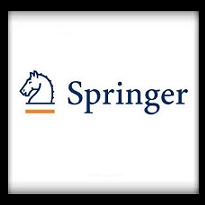دانلود ترجمه مقاله کاربرد گرمادهی مستقیم لیزر و نانوذرات طلا در درمان هایپر ترمیای بافت تومور
|
دانلود رایگان مقاله انگلیسی + خرید ترجمه فارسی
|
|
| عنوان فارسی مقاله: | درمان هایپر ترمیای بافت های تومور با گرمادهی مستقیم لیزر و نانوذرات طلا |
| عنوان انگلیسی مقاله: | On the Hyper Thermal Therapy of Tumor Tissues by Direct Laser Heating and Gold Nano Particles |
| مشخصات مقاله انگلیسی (PDF) | |
| سال انتشار مقاله | ۲۰۱۴ |
| تعداد صفحات مقاله انگلیسی | ۸ صفحه با فرمت pdf |
| رشته های مرتبط با این مقاله | پزشکی، زیست شناسی و فیزیک |
| گرایش های مرتبط با این مقاله | زیست فناوری (بیوتکنولوژی)، بیو مواد، فیزیک پزشکی، علوم سلولی و مولکولی، بیو فیزیک، بیوشیمی، فیزیک هسته ای، مهندسی اپتیک و لیزر، ذرات بنیادی و پاتولوژی |
| مجله مربوطه | مجله بیومتریال و نانوبیوتکنولوژی (Journal of Biomaterials and Nanobiotechnology) |
| دانشگاه تهیه کننده | آزمایشگاه تحقیقات ماکرومولکولی، گروه فیزیک، دانشکده علوم، دانشگاه ابو بکر، تلمسان، الجزایر |
| کلمات کلیدی این مقاله | هایپر ترمیا درمانی، نانوذرات طلا، رزونانس پلاسمون، گرمادهی لیزری |
| نشریه | Scirp |
| مشخصات و وضعیت ترجمه مقاله (Word) | |
| تعداد صفحات ترجمه مقاله | ۱۸ صفحه با فرمت ورد، به صورت تایپ شده و با فونت ۱۴ – B Nazanin |
| ترجمه اشکال | ترجمه توضیحات زیر اشکال انجام شده و اشکال و نمودارها به صورت عکس در فایل ترجمه درج شده است. |
فهرست مطالب:
چکیده
۱ مقدمه
۲ معادله زیستی حرارتی
۳ حرارت دهی لیزری مستقیم
۳ ۱ توزیع درجه حرارت اولیهT0(x)
۳ ۲ پروفیل های دمایی زمانی و مکانی
۳ ۳ اثرات ریزش و متابولیسم خون
۴ اشعه دهی غیر مستقیم توسط نانوذرات طلا
۴ ۱ توزیع دمایی اولیه برای یک تومور کروی
۴ ۲ جبهه های دمایی زمانی
۵ کاربرد ها
۶ نتیجه گیری
بخشی از ترجمه:
یکی از چالش های مهم برای توسعه راهبرد های هایپرترمیایی کارامد آگاهی و دانش پروفیل های دمایی مناسب برای ماهیت و اندازه تومور است. این مطالعه در جهت حل این چالش بر اساس مدل های تحلیلی ساده مکمل با پارامتر های فیزیکی و بیولوژیکی مورد نظر انجام شده است.اثرات جریان خون، متابولیسم و شدت تابش لیزری با معادلات ساده از حل برخی معادله های دمایی زیستی با تفاوت بین اشعه دهی مستقیم و حرارت دهی غیر مستقیم توسط نانوذرات طلا بررسی شد.نتایج به دست آمده تحت طیفی وسیعی از شرایط یک پایداری سیستماتیک را با توجه به حساسیت ضعیف دما به موقعیت تومور نشان داد اما طی زمان وابستکی قوی مشاهده شد.متابولیسم حرارتی در افزایش دمای خون تا دو درجه نقش دارد اما جریان خون به طور قابل توجهی موجب میرایی فرایند های حرارتی شد.در مراحل اولیه درمان لیزری، یک آستانه به طور سیستماتیک بالاتر از سرعت جریان خون دیده شد. طول مشخص جدید معرفی شده و با مقیاس های زمانی ارزیابی شد که مشخص کننده مکانیسم انتشار حرارت در بافت های توموری است.
بخشی از مقاله انگلیسی:
۱٫ Introduction This paper deals with the temperature modeling in connection with hyper thermal therapy using laser radiation to heat up and eliminate tumor tissues in biological organs. Cells in tumor tissues are more sensitive to heating and show compact conformations as compared to healthy ones leading to inhibition of normal circulation of nutrients and oxygen in tumor cells. In addition, this behavior can be used to develop therapy strategies with the capability of differentiating between tumor and healthy tissues and tuning interactions between lasers and biological tissues to generate adequate responses. The energy deposited into biological tissues by short wavelength high energy lasers exceeds their binding energy which means that these lasers can be used to remove micron sized tumors. Photosensitive dyes provide the possibility to turn to lasers with a lower power and wavelength is adapted to the absorption spectra of the dyes [1-4]. Hyper thermal therapy is emerging as an alternative to conventional treatments based on surgery, chemotherapy or radiotherapy with the advantages of reducing collateral effects and treatment discomfort. Its success relies on a detailed analysis of the heat transfer problem including control of time and space temperature developments throughout the tumor. In such an analysis, one should take into account the specific thermophysical parameters of tissues along with the appropriate conditions initially and at boundaries. A protocol of tumor’s heating should be designed to comply with the recommendations of the medical team according to the nature of tumor and standard regulation norms [5-8]. Laser therapy can be operated in two ways depending on whether the tumor can be exposed to a direct beam or by indirect heating via gold nano particles (GNPs). In the latter case, the capacity to reduce collateral effects is enhanced by targeting tumor tissues with a great accuracy. Therefore a good selection of an adequate distribution of GNPs together with an efficient sensing method may combine to make the particles responsive to external remote command signals helping to implement the therapy protocol. For this reason, GNPs are often used because of their specific response to lasers with given wavelengths and intensities via the surface plasmon resonance phenomenon [9-12]. The present paper is organized as follows. The celebrated Pennes bio-heat equation is firstly introduced with the necessary definitions. Then the case of direct heating of a tumor in contact with the ambient is solved before considering the case of indirect heating via GNPs for a tumor located deep inside the body. Initial temperature distributions were examined first prior to the time temperature development in terms of the laser power and the duration of exposure. Specific examples and applications were given in an effort to help develop efficient therapy strategies with the relevant thermophysical and biological parameters and a variety of biological tissues. 2. The Bio-Heat Equation Accommodating temperature sensors throughout the tumor’s region to monitor the heating process is certainly quite painful for the patient and efforts are made to alleviate such discomforts by designing models for solving the following bio-heat equation [13] under reasonable conditions of practical interest The subscript b refers to blood while letter without subscript refer to the tumor unless specified otherwise. T rt ( , ) represents the temperature field at point r and time is the gradient operator; letters ρ, c and k refer to density, heat capacity and conductivity, respectively; ωb is the rate of blood perfusion and Tb the blood temperature. The metabolic heat generation of living cells is Qm while the heat produced by the laser beam is denoted Q rt ( , ) . The left hand side of Equation (1) represents the rate of thermal energy absorbed per unit volume of the biological tissue; the first term in the right hand side is the rate of heat conduction according to Fourier’s law and the second term represents the rate of heat convection through blood vessels. The convective heat exchange via blood circulation insures thermal regulation throughout the body. Blood enters the tissue at the arterial temperature Tb, exchanges a certain amount of energy which is equivalent to ρ ω bb b b c TT [ − ] bringing the blood temperature to the level of that of the tissue. Resolution of such an equation is subject to the knowledge of initial and boundary conditions in addition to relying on appropriate values for the thermo-physical and biological parameters of the tissues, the flow rate of blood, the metabolic heat generation and the energy deposited by the laser. This problem is solved first under the conditions of a direct exposure to the incident beam before turning to the case of heating via GNPs.
|
دانلود رایگان مقاله انگلیسی + خرید ترجمه فارسی
|
|
| عنوان فارسی مقاله: | درمان هایپر ترمیای بافت های تومور با گرمادهی مستقیم لیزر و نانوذرات طلا |
| عنوان انگلیسی مقاله: | On the Hyper Thermal Therapy of Tumor Tissues by Direct Laser Heating and Gold Nano Particles |
خرید ترجمه فارسی مقاله با فرمت ورد


